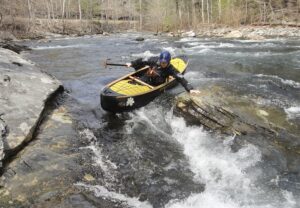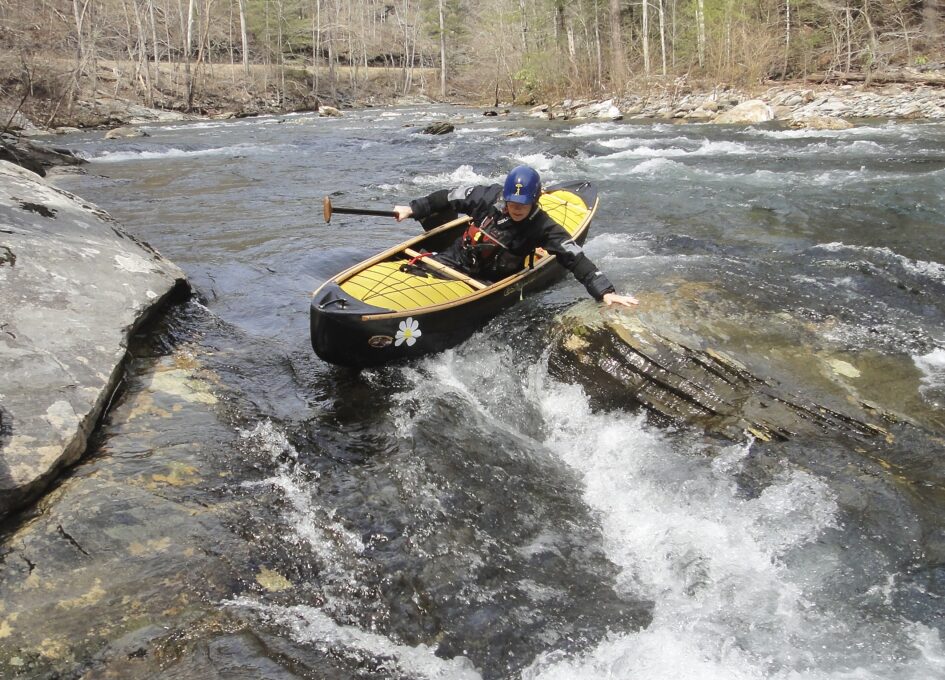
Creeking Rocks!
Hitting Rocks – It’s All About Bouncing in the Right Direction
By: Andrew and Carole Westwood
Recently, the thrill of running a steep creek was heightened when I crested a horizon line and looked downstream. Though I would be following a path of mostly water, the best part would be bouncing off a series of rocks, which if all went well, would direct me toward my next eddy.
Running steep, low volume rivers draws on both traditional water reading skills and a host of unique tricks designed to take advantage of the many exposed rocks. Using rocks to guide your canoe through rapids is a common trick used on shallow creek runs. Colliding with rocks may be shunned in deeper rivers, but in creeking, doing so is all part of the game.
A pioneer of many first descents of creeks in the Southern U.S., Dave “Psycho” Simpson coined the phrase that went something like, “It ain’t if you hit a rock or not, it’s if you hit the rock and bounce the right way”. Low flow rocks often are not to be avoided, rather, they are used to assist boat placement. Some of the best lines use a mix of channelized water and boulders to descend a steep run. Besides, rocks offer that quick change in direction that no stroke could ever match.
Hitting rocks can also help to stabilize your canoe. When fast water piles onto boulders it builds a pillow wave with an upstream seam of descending water. Getting caught here may pull your paddle deep upsetting your balance, or perhaps cause you to catch your edge. Either way the risk of capsize is increased. Better to cross the seam and aim to hit the rock. Then reach out a hand and grab the rock to reduce the risk of capsize.
Things to remember while developing your rock hitting skills:
- Lean and tilt into rocks
- Use your hands to cushion and guide your boat’s path
- Account for friction after slamming into rocks. You may need to to speed up after impact
- Strike using the front half of your canoe. A hit past midships can spin you out of control
- Though not essential, a plastic boat is both the toughest and slipperiest for bouncing off of rocks
- Elbow pads!
Steep, low flow creeky runs often require hitting rocks. Bouncing the right way is key to holding your line and definitely adds to the excitement of your run.
Andrew and Carole Westwood are Paddle Canada Moving Water Canoe Instructor Trainers. See Westwoodoutdoors.ca for information on paddling instruction, books, articles and videos.


